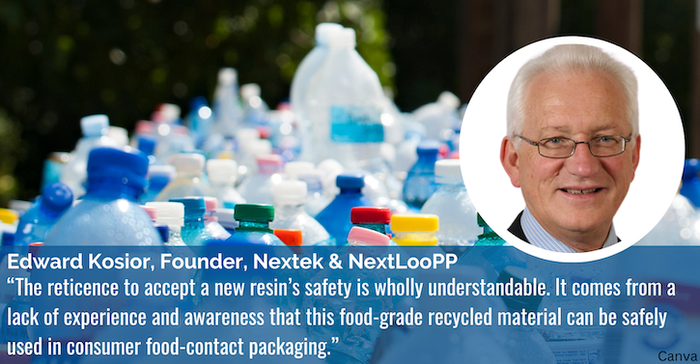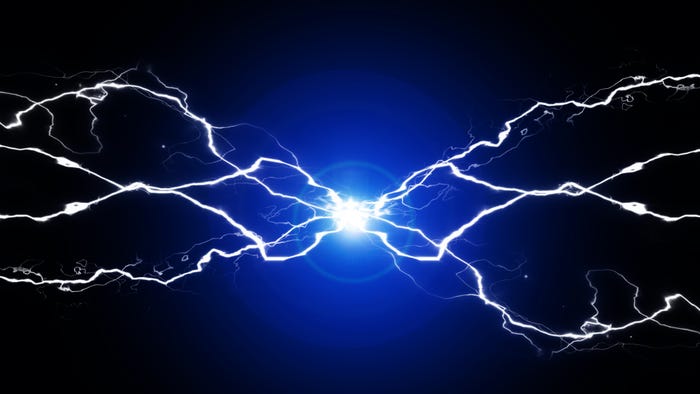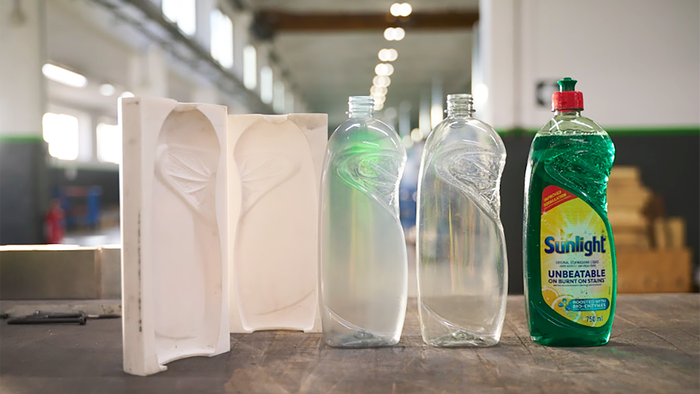Food-Grade Recycled Polypropylene is Poised for US Intro
The NextLooPP initiative’s success and breakthroughs across the Atlantic and an FDA Letter of No Objection to 14 companies hold promise for food-grade PP recycling on American shores.

At a Glance
- Research suggests PP residual contamination levels one-tenth of HDPE milk bottles and one-hundredth of PET.
- 2024 trials of recycled PP achieved food-grade purity levels exceeding 95% in packaging applications.
- New performance standards and an automatic sorting technology breakthrough will ease market acceptance.
In May 2023, we published an article in Packaging Digest announcing the NextLooPP initiative’s success with food-grade recycled polypropylene (rPP) in the UK and EU, and our decision to replicate that success in the Americas. Since launching the project in 2020, 53 participants across the plastics supply chain have steadily broken through most of the barriers to producing recycled food-grade polypropylene (FGrPP) from post-consumer waste. We continue to share our science-based findings and expertise with US organizations.
Since that 2023 article, the FDA has given its Letter of No Objection (LNO) to 14 companies in North America, Asia, and Europe to use their recycled resin products for food-contact packaging. Yet, so far, there is no information or publicity on applications of recycled food-grade Polypropylene (PP) resin that are actually being used in food-contact packaging.
It didn’t take long to understand why, given that PP is just embarking on its recyclability journey. If we consider the most widely recycled polymers to date — PET and HDPE — their recycling journey was not an immediate overnight success, either.
I recall when we were first producing food-grade rPET (in the UK) there was considerable reluctance to its use in food-contact packaging, and it required extensive trialing before being adopted for standard production. Now this is an everyday occurrence.
PP is currently going through the exact same phase.

Recycled food-grade PP is at the starting gate.
PP accounts for more than 20% of global plastics production and food packaging is one of its primary products. In the USA PP is one of the most converted polymers with a market share of about 20% (in 2018) yet it is also one of the least recycled (3% to 5%) mainly due to its use in non-bottle packaging, such as cups, tubs, and trays.
To understand why recycled food-grade PP resin is still dithering on the sidelines, even with an LNO, we need only check PET and HDPE’s first, tentative recycling steps. The reticence to accept a new resin’s safety is wholly understandable. It comes from a lack of experience and awareness that this food-grade recycled material can be safely used in consumer food-contact packaging.
The challenge with recycled polypropylene (rPP) is that until now it has not been possible to accurately differentiate between PP packaging that once contained non-food products from those containing food. Consequently, FGrPP has been limited to closed-loop recycling, hand sorting or advanced recycling technology processes based on mass balance (which is not yet recognized as recycling in the EU).
Characterizing residual contamination levels in rPP.
Progress is rapidly catching up, however, through science-based explorations to close the loop on post-consumer food-grade PP. Achieving this has meant methodically addressing every roadblock along the way and diving into the specific sorting and decontamination requirements for the recycling processes for PP. This led to NextLooPP’s investigation to determine the residual contamination levels of post-consumer PP packaging, which up until now, have never been characterized.
A lack of data showing the misuse/mis-selection rate within PP feedstocks prevented any reliable way of defining the residual levels that could potentially migrate into food, and any understanding of which molecules to target via decontamination processes. NextLooPP’s study aimed to identify substances that might cause samples of rPP to be outliers from the expected input stream that could represent challenges to the final safety of the recycled plastics. The key issue was to check whether the substances observed could potentially be genotoxic.
Considerations include the shape of the package.
Although being olefinic, the packaging format of consumer PP packaging reduces the chances of it being in such a consumer-misuse scenario. A large proportion of PET packaging is relatively durable, with a tight closure, making it a container of choice when used for storing hazardous materials. Likewise, HDPE packaging is also in bottle form with a closure meaning it, too, may be used in such a scenario. PP food containers, on the other hand, are less likely to come in bottle form and much more likely to be pots, tubs, or trays with limited closure capability, making them a less likely candidate for consumer misuse.
Characterizing the residues in post-consumer packaging that have been sorted into mono-polymer fractions was done by analyzing and testing multiple batches of food and non-food samples to see what molecules are present and if there are any areas of concern.
To achieve this, our team of scientists worked on 20-tonne (US 22.5-ton) batches of PP bales sourced from a UK-based materials recovery facility (MRF). Using automatic optical sorters to separate color fractions of natural (clear), white, and colored articles, each color fraction was hand-sorted to separate articles from food and non-food applications.
The analytical study involved 700 tests, representing approximately 17,500 different PP packs based on 25 significantly sized flakes per test. This was estimated to be a cross-sectional representation of 7% of the packs from the combination of batches of 260,000 packs.
Following this contamination study, researchers characterized the contamination levels in PP, concluding that they are on the order of 10 times less than that which we expect in HDPE milk bottles; and 100 times less than that expected in PET. This is not surprising given the applications that select PP as the packaging material.
“Finding validated local end-of-life solutions for post-consumer food-grade PP packaging has been the driving force behind NextLooPP’s participants.”
New food-grade resins challenge the status quo.
This study marked a turning point in the NextLooPP project, giving us the confidence to use our PPristine food-grade rPP resins in food-contact packaging.
The performance standards we have now developed will enable us to help organizations reach a high level of technical performance as well as commercial and legal confidence in food-grade rPP. By deploying NextLooPP’s expertise and technical backup, we aim to license the technology to ensure that the resin standards can be fast-tracked into US-produced rPP food-grade packaging.
Finding validated local end-of-life solutions for post-consumer food-grade PP packaging has been the driving force behind NextLooPP’s participants, who continue to produce and trial a range of unique grades of high-quality food-grade recycled PP resins produced using Nextek’s patented PPristine decontamination technology.
Commercialized trials prove the concept.
Eighteen of NextLooPP’s brand and converter participants have now finalized 55 commercialization trials using five PPristine resin grades: Natural food-grade IM, Natural food-grade, White food-grade, Mixed Color food-grade, and non-food grade Mixed Color INRT. The results have been outstanding. For example, trials using 30% of PPristine resins in both extrusion and thermoforming trays achieved product quality comparable with the virgin products with no changes in processing conditions.
Breakthroughs lead the project toward the finish line.
The multi-participant project fine-tunes resin quality standards that are poised to become standard for food-grade recycled PP, and the success continues.
Sorting trials conducted in February by NextLooPP together with Tomra Recycling have confirmed a major breakthrough in the automatic sorting of food-grade PP packaging. The trials combined Tomra’s near-infrared visual spectrometry and GAINnext deep-learning technology. The trials achieved food-grade purity levels exceeding 95% in packaging applications. This is an exciting development and an invaluable boost to the NextLooPP project.
The technology has the potential to be rolled out to all PP packaging sorting facilities and will help produce valuable food-grade, post-consumer recycled PP streams. By providing a sorted food-grade PP PCR stream, GAINnext will enable the NextLooPP decontamination process to be carried out in many more recycling operations globally.
After nearly four years of intense collaboration, the NextLooPP participants are now breaking down the final barriers to producing food-grade recycled PP from post-consumer packaging into new circular economy products, and the initiative is looking forward to launching the NextLooPP Americas project to achieve similar outstanding results.
About the Author(s)
You May Also Like




